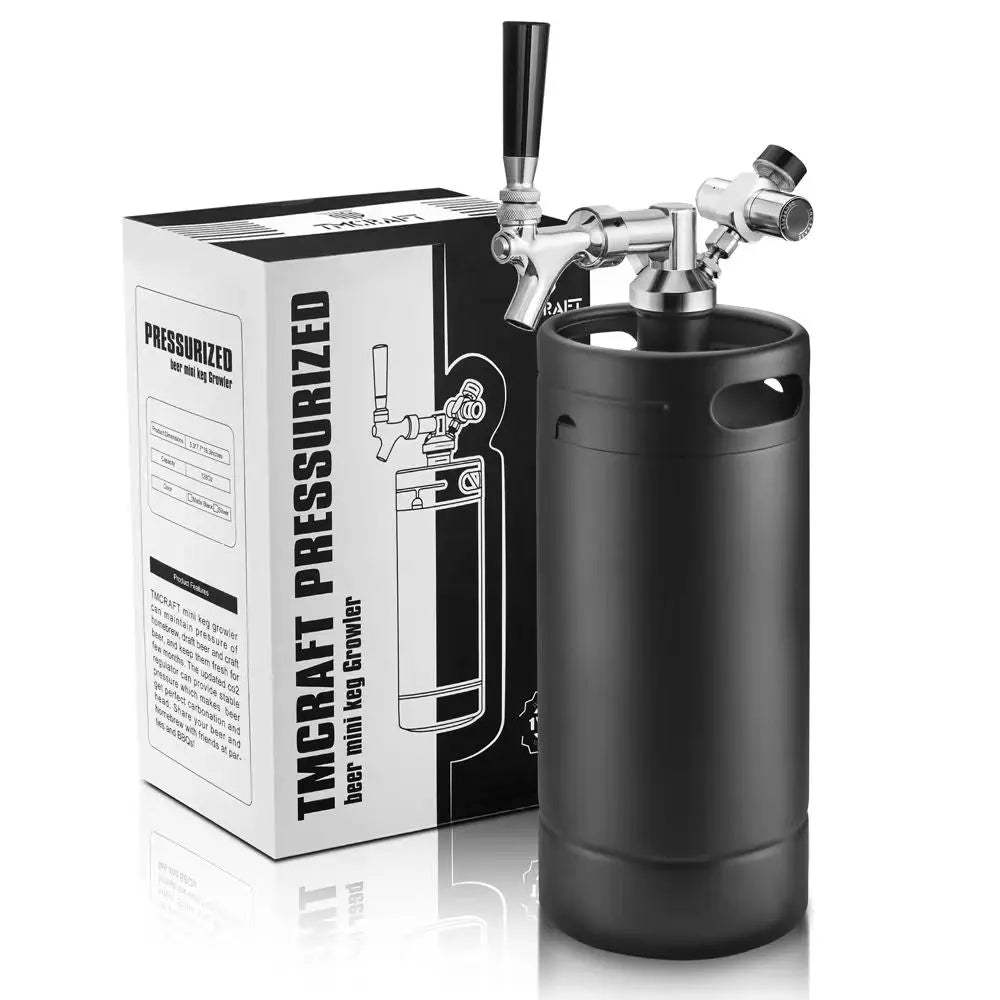The Complete Ball Lock Keg Setup Guide: From CO₂ to Tap
 Focus Keywords: Ball Lock Keg, CO2 Keg System, Homebrewing Equipment, Beer Dispensing, TMCRAFT Ball Lock Kegs
Focus Keywords: Ball Lock Keg, CO2 Keg System, Homebrewing Equipment, Beer Dispensing, TMCRAFT Ball Lock Kegs
Unlocking the Perfect Pour: Your Ultimate Ball Lock Keg Setup Guide
Whether you're a new homebrewer or a seasoned pro, upgrading to a ball lock keg system can completely transform your brewing experience. Known for their ease of use, airtight seals, and reliable performance, ball lock kegs are the go-to solution for both hobbyists and commercial brewers who want the best in beer storage and dispensing.
In this guide, we’ll walk you through the complete ball lock keg setup process, from connecting your CO₂ tank to pulling your first perfect pint.
What Is a Ball Lock Keg?
A ball lock keg is a stainless steel container originally used in soda distribution, now widely adopted by the brewing community for its compact design and secure connections. It features two quick-connect posts — one for gas (CO₂) and one for liquid (beer) — each sealed with a spring-loaded "ball lock" mechanism.
At TMCRAFT, we’ve refined the ball lock keg into a high-performance tool for homebrewers and commercial operations alike, offering multiple sizes and accessories to match your brewing style.
What You’ll Need for Your Ball Lock Keg Setup
To build a reliable CO₂ keg system using a ball lock keg, you'll need the following components:
-
TMCRAFT Ball Lock Keg (1.5, 2.5, 3, or 5-gallon sizes available)
-
CO₂ Tank (5 lb. is ideal for most home setups)
-
Dual Gauge CO₂ Regulator
-
Gas Line with Ball Lock Disconnect (Gray)
-
Liquid Line with Ball Lock Disconnect (Black) and Tap/Faucet
-
Beer Line Tubing (Food-grade, 3/16” ID)
-
Sanitizer & Cleaning Tools
Step-by-Step Setup: From CO₂ to Tap
1. Clean and Sanitize Everything
Before anything touches your beer, sanitize your keg, lines, and disconnects. Clean gear ensures your beer stays fresh and free of contamination.
2. Connect Your CO₂ System
-
Attach the CO₂ regulator to your CO₂ tank.
-
Set the pressure (10–12 PSI is typical for ales; 12–14 PSI for lagers).
-
Use a gas line disconnect (gray) to connect the regulator to the gas post on the keg.
-
Tighten fittings securely to prevent leaks.
3. Transfer and Seal Your Beer
-
Rack your homebrew into the sanitized ball lock keg, leaving minimal headspace.
-
Close the lid and lock it down.
-
Purge oxygen by turning on the CO₂ and pulling the pressure relief valve 3–5 times to flush out air and replace it with CO₂.
4. Carbonate Your Beer
There are two main options:
-
Set-and-Forget Method: Keep the keg under serving pressure (10–12 PSI) in the fridge for 7–10 days.
-
Burst Carbonation: Set pressure to 30 PSI and shake the keg gently for 1–2 minutes, then lower to serving pressure.
5. Dispense Your Beer
-
Attach the liquid disconnect (black) to the beer post.
-
Connect your beer line and tap.
-
Pour and enjoy cold, carbonated beer straight from the tap!
Why Choose TMCRAFT Ball Lock Kegs?
TMCRAFT Ball Lock Kegs are designed for superior performance and durability:
-
304 stainless steel for hygienic, long-lasting use
-
Precision-machined ball lock posts for secure connections
-
Available in multiple sizes to suit small-batch or large-batch brewing
-
Optional accessories: Pressure relief valves, sight glasses, carrying handles, and more
-
Compatible with standard CO₂ keg systems for easy integration
Tips for Long-Term Maintenance
-
Always clean your keg after each use with warm water and sanitizer.
-
Disassemble and soak the posts and poppets every few uses to prevent clogs.
-
Store dry and pressurized with a small amount of CO₂ to prevent bacterial growth.
Final Thoughts
A ball lock keg is more than just a container — it’s an essential part of your homebrewing equipment that gives you professional-level beer dispensing and storage capabilities right at home. With the right CO₂ keg system and a high-quality keg from TMCRAFT, you’ll enjoy perfectly carbonated, fresh beer on tap every time.
🍺 Ready to Build Your Keg System?
👉 Explore TMCRAFT Ball Lock Kegs
Level up your brewing game with gear that’s built to pour perfection.

